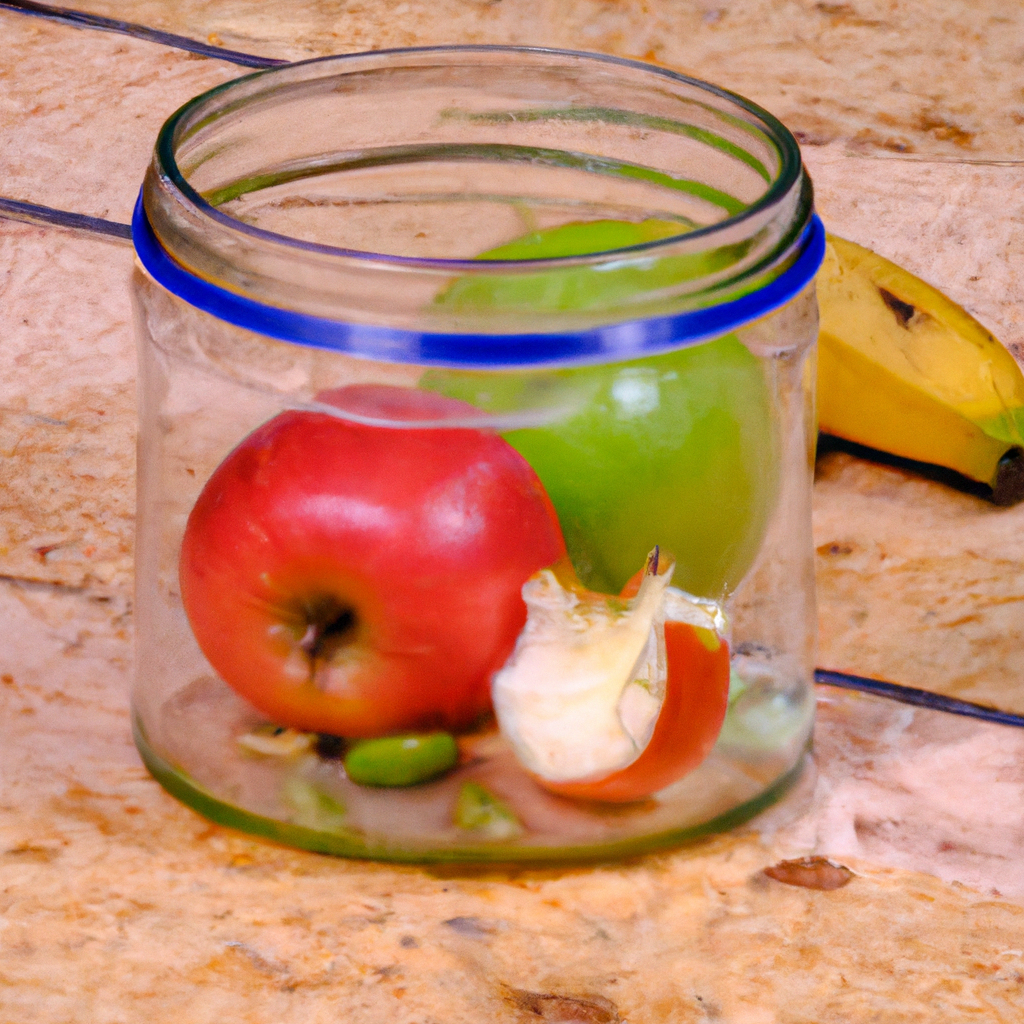In a world where food sustains our bodies and nourishes our souls, it seems almost sacrilegious to let even a morsel go to waste. Yet, despite our best intentions, mountains of food are discarded every day, reminiscent of an unforgiving tragedy. But fear not, dear readers, for within these pages lie the secrets to a more sustainable existence, where every crumb is cherished and every harvest celebrated. Join us as we embark on a tantalizing journey, exploring ingenious strategies that marry our appetite with a commitment to Mother Earth. Together, let us unlock the door to a gastronomic utopia where reducing food waste is not just a noble quest but a deliciously gratifying endeavor.
1. Salvaging Scraps: Creative Ways to Reimagine Leftovers into Delicious Delights
Tired of letting your leftovers go to waste? With a dash of creativity, you can transform those neglected remnants into mouthwatering dishes that will have your taste buds jumping for joy. No more boring reheated meals – it’s time to take those scraps to the next level!
1. **Think outside the box:** Don’t be afraid to experiment with unusual flavor combinations. Leftover roasted chicken? Why not shred it and mix it with tangy BBQ sauce, then stuff it into a fluffy bao bun? Let your imagination run wild and create unexpected fusions that will surprise and delight your palate.
2. **The magic of the oven:** Heat transforms leftovers, and the oven is your secret weapon. Toss together a medley of roasted vegetables, drizzle them with olive oil, sprinkle some herbs, and roast until golden and caramelized. The result: a vibrant and flavorful side dish that will steal the show!
3. **Wrap it up:** Transform your leftover proteins into sensational wraps or sandwiches. Take that last bit of grilled steak, slice it thinly, and layer it onto a warm tortilla with crunchy lettuce, diced tomatoes, and a dollop of zesty aioli. Suddenly, you have a gourmet lunch that will make your coworkers green with envy.
- 4. **Savor the soup:** Soups are the ultimate comfort food, and they provide an excellent opportunity to use up leftovers. Stop tossing those vegetable odds and ends, and toss them into a pot with some broth. Simmer until tender, and blend for a creamy and nutritious soup. Alternatively, use your leftover roast to make a hearty beef stew that will warm you up on a chilly evening.
- 5. **Embrace the grain:** Leftover rice or quinoa can be transformed into a colorful grain bowl packed with flavor. Combine with fresh veggies, a protein of your choice, and a tangy dressing. Voila! A healthy and satisfying lunch that ticks all the boxes.
With these creative ideas, you’ll soon find yourself looking forward to leftovers night. So, don’t let those scraps go to waste – reimagine them into delicious delights that will breathe new life into your dining experience!
2. The Art of Preservation: Secrets to Extending Shelf Life and Reducing Food Waste
Preserving food is not merely a practical necessity; it is an artful skill passed down through generations. By understanding the secrets of preservation, we can unlock the potential to extend shelf life and reduce food waste in our everyday lives. In this section, we delve into some age-old techniques and innovative methods that will help you master this art.
The Powerhouses of Preservation:
These natural wonders have been diligently relied upon for centuries and continue to be the backbone of preservation techniques:
- Salt: Known for its ability to draw out moisture, salt has been used for curing meats, pickling vegetables, and preserving fish. It enhances flavors and acts as a natural preservative.
- Vinegar: With its acidic properties, vinegar inhibits the growth of certain harmful bacteria, making it a common component in pickling, sauce-making, and preserving fruits.
- Sugar: A key player in sweet preservation, sugar prevents microbial growth, acting as a preservative in jams, jellies, and candied fruits.
- Smoke: Adding flavor and acting as a preservative, smoke has been used for centuries in meat curing and fish preservation. The unique properties of different woods contribute to the flavor and preservation process.
Modern Innovations:
While traditional preservation methods have stood the test of time, modern advancements have expanded the possibilities for shelf-life extension:
- High-Pressure Processing (HPP): This innovative technique applies immense pressure to food, effectively destroying microbial activity while maintaining taste and nutritional value.
- Vacuum Packing: By removing air from packaging, foods are protected from oxidation and the growth of spoilage microorganisms. This process significantly extends shelf life.
- Modified Atmosphere Packaging (MAP): By replacing the air in packaging with gases such as nitrogen and carbon dioxide, MAP slows down the spoilage process and extends the freshness of perishable goods.
- Freezing Techniques: Properly freezing food at its peak freshness can preserve its natural flavors and nutrients for months. Techniques like flash freezing and blanching ensure optimal results.
Mindful Tips for Everyday Preservation:
Beyond the techniques and innovations, there are simple habits we can adopt to reduce food waste and extend shelf life:
- Organize Your Pantry: Label and rotate your pantry items to ensure older goods are used before new ones. This prevents forgotten food from spoiling.
- Proper Storage: Understanding the unique storage requirements of different foods can significantly increase their longevity. For example, refrigerating tomatoes can accelerate spoilage, while onions should be stored in a cool, dry place.
- Preserve Excess Produce: Transform surplus fruits and vegetables into jams, sauces, or freeze them for later use. This not only reduces waste but also ensures your produce won’t go to waste before you get a chance to enjoy it.
- Utilize Leftovers Creatively: Repurpose leftovers into new dishes or freeze them for quick and convenient future meals.
Preservation is an ancient art blended seamlessly with modern techniques. By embracing these time-tested practices and innovative methods, we can reduce food waste, extend the lifespan of our favorite foods, and savor their flavors for longer.
3. Mindful Meal Planning: Clever Tips and Tricks to Minimize Food Waste in the Kitchen
When it comes to reducing food waste in the kitchen, mindful meal planning is your secret weapon. With a little bit of creativity and some clever tips and tricks, you can transform your kitchen into a waste-minimizing haven. Here are some simple strategies that will not only help you cut down on food waste but also save you time and money:
- Check your pantry: Take inventory of the ingredients you already have before heading to the grocery store. This will prevent you from buying unnecessary duplicates and ensure you utilize what you already have.
- Plan your meals: Create a weekly meal plan and stick to it. This will help you avoid impulse purchases and ensure that all ingredients are used before they spoil.
- Master the art of repurposing: Get creative with leftovers! Transform yesterday’s dinner into a whole new meal. A roasted chicken can become chicken tacos, and cooked vegetables can be used in a stir-fry or turned into a delicious soup.
Minimizing food waste goes beyond just planning and repurposing. Here are a few additional tips to keep in mind:
- Get friendly with your freezer: When you can’t use perishable items in time, freeze them for future use. Fruits can be turned into smoothie packs, bread can be sliced and frozen for toast, and vegetables can be blanched and stored for later use in soups or stews.
- Embrace imperfect produce: Don’t judge a fruit or vegetable by its appearance! Embrace imperfect produce and incorporate it into your meals. Slightly bruised apples can be turned into applesauce or used in baking, while wilted greens can be revitalized in a sauté or soup.
- Implement a first-in, first-out system: Arrange your pantry, refrigerator, and freezer so that older items are in the front, making them more visible and reminding you to use them first. This will prevent items from getting forgotten and going to waste.
4. From Root to Stem: A Resourceful Guide to Maximizing Produce Usage and Minimizing Waste
Have you ever wondered how you can make the most out of your fresh produce, ensuring that none of it goes to waste? Look no further! In this guide, we will explore innovative ways to utilize every part of your fruits and vegetables, from root to stem.
1. Root Vegetable Utilization:
- Don’t toss those carrot tops! They are packed with flavor and perfect for making pesto or adding to soups and stews.
- Radish greens may seem too bitter to eat, but they make a delightful addition to salads when paired with sweeter ingredients.
- Instead of discarding beet stems, chop them up and sauté them for a crunchy and nutritious side dish.
2. Leafy Green Innovations:
- When your lettuce begins to wilt, don’t fret! Transform it into a vibrant and nutrient-rich smoothie.
- Kale stems may seem tough, but you can pickle them for a tangy and crunchy snack.
- Spinach stems are not to be ignored either. Blend them into a pesto or add them to your favorite green juice for an extra dose of vitamins.
3. Delicious Fruit Scraps:
- Never throw away citrus peels again! Zest them and use the flavorful zest in your baked goods or infuse it in vinegar for a burst of citrusy goodness.
- Transform overripe bananas into moist and flavorful bread or freeze them to add creaminess to your next smoothie.
- Watermelon rinds can be pickled or turned into a refreshing cooler. Waste not, want not!
By utilizing these creative and resourceful methods, not only will you reduce produce waste, but you will also discover new and delicious ways to incorporate often underappreciated parts of your fruits and vegetables into your meals. From greens to roots and even scraps, let your creativity thrive!
There you have it! If you can master these smart strategies for reducing food waste, you can help make the world a better and more sustainable place, one plate at a time. You can start making an impact today, while also enjoying more healthy meals throughout the week. So why not get started now? Every meal counts!



